What is GAPS?
![]()
What’s so great about the GAPS diet? Who might benefit from the GAPS diet? How does GAPS heal so many different issues?
You may have had these questions so I’m going to attempt to answer them.
First a list of symptoms/disorders that GAPS can address. This list is from Baden’s Blog
- acid reflux
- acne (typical and cystic)
- adrenal burnout
- allergies
- anger, unfounded
- anxiety
- appetite issues (excessively small or large)
- asthma
- auditory hallucinations
- autism spectrum disorder
- attention deficit (with or without hyperactivity) disorder
- bedwetting
- behavioural problems
- bloating
- blood sugar issues (low and high)
- candida overgrowth
- celiac disease
- chronic diarrhea
- colic
- colitis
- constipation
- cravings (sugar, starch, pica, etc)
- crohn’s disease
- cystic fibrosis
- dental enamel defects
- depression
- diverticulitis
- dysphoria
- dyspraxia
- eczema
- eosinophilic esophagitis
- fatigue
- failure to thrive
- feeding difficulties (including “picky eating”)
- fibromyalgia
- food phobias
- gas
- headaches
- heartburn
- histamine, excess levels
- hyperactivity
- hypoglycemia
- incontinence (fecal and/or urinary)
- indigestion
- irritability
- leaky gut
- learning disabilities
- libido, overactive
- malnutrition
- menstrual and pre-menstrual issues
- migraines
- mineral deficiencies
- mood swings
- muscle cramps
- nail-biting
- obsessiveness (over historical and current events)
- obsessive-compulsive disorder
- pain: muscle, foot
- phobias (food, environment, social)
- psoriasis
- rheumatoid arthritis
- reflux
- rosacea
- schizophrenia
- seizures (possibly dependent on the cause, but including those in which dozens are occurring per day)
- skin disorders
- sleep issues (difficulty falling asleep; difficulty staying asleep, excessively brief sleep, excessively long sleep)
- sound sensitivity
- stool abnormalities
- temper, short
- thyroid, low functioning
- tics
- tooth decay
- tummy pains
- under-eye circles
- urinary tract infections
- violence (against self, against others)
- vision challenges (though not blindness)
- warts
- weight issues (underweight and overweight)
- white coating on tongue
Why yes that was a long list wasn’t it. These are conditions that people have seen corrected by following GAPS. You can go to the blog linked above for more information on some of these conditions.
GAPS stands for Gut And Psychology Syndrome. The diet that this is based on was developed many years ago by Dr Haas as a diet for Celiac disease. Elaine Gottschall had a daughter with a severe intestinal disease that was cured by this diet. She wrote a book called Breaking the Vicious Cycle![]() which explained the diet, called the Specific Carbohydrate Diet (SCD), and shared it with the world. She was a biochemist and did research into what foods were safe for people who needed this diet. It was then discovered that the diet she popularized benefited children with autism. Dr Natasha Campbell-McBride had a son with autism and she set out to cure him. She put him on the SCD and in conjunction with some other therapies she cured his autism. That success led to her opening a Clinic in England that treats children and adults with Autism and many other issues. She then wrote the Gut and Psychology book and shared her discoveries with the world. I will be forever grateful to these two women for writing those books. It has made it possible for so many people (us included) to take charge of their own health and find healing that wasn’t coming with the medications and therapies that Dr’s were prescribing for them.
which explained the diet, called the Specific Carbohydrate Diet (SCD), and shared it with the world. She was a biochemist and did research into what foods were safe for people who needed this diet. It was then discovered that the diet she popularized benefited children with autism. Dr Natasha Campbell-McBride had a son with autism and she set out to cure him. She put him on the SCD and in conjunction with some other therapies she cured his autism. That success led to her opening a Clinic in England that treats children and adults with Autism and many other issues. She then wrote the Gut and Psychology book and shared her discoveries with the world. I will be forever grateful to these two women for writing those books. It has made it possible for so many people (us included) to take charge of their own health and find healing that wasn’t coming with the medications and therapies that Dr’s were prescribing for them.
So the basic premise is that eating foods that are difficult to digest, when your gut is already damaged and has an imbalance of bacteria, will lead to many different uncomfortable symptoms. These symptoms can be physical in the form of things like gut pain, diarrhea, and constipation or harder to pin on the gut like depression, schizophrenia, tics, and autism. One of the reasons for these latter symptoms is that your gut produces most of your serotonin and other brain chemicals. If your gut is damaged you won’t make as many of those chemicals. In addition many of these “GAPS” symptoms can come from toxins building up in your body. For example this chart shows a comparison between symptoms of mercury poisoning and autism. Most people are familiar with the damage that lead can do to a person as well. Other toxins have their own symptoms. Your liver removes many toxins from your blood stream and puts them into your bile which is then injected into your digestive system at the start of the small intestine. A damaged gut will reabsorb those toxins because it isn’t a barrier to them like it should be. This is commonly called a leaky gut. It is leaky because it allows things to pass into the blood stream that should stay in the digestive track. As you can imagine this can cause a lot of problems in the body depending on what has crossed that gut barrier. I talked about this some in my post about oxalates. Another well know cause of behavioral and psychological symptoms is an overgrowth of pathogenic microbes. Things like strep or candida are well known to cause behavioral or psychological changes in people when they over grow in the gut. Another one that my family is far too familiar with is Lyme disease. Many people have a combination of gut and psychological symptoms but some seem to only have one or the other. They can all be helped by this way of eating, even in the absence of apparent gut symptoms.
One question people have is how did the gut get damaged in the first place? The biggest culprit is antibiotics. These wonder drugs that have saved many lives come with a price. They kill bacteria indiscriminately. This means that when they are killing off the bacteria that make you ill they are also killing off the bacteria that keep you healthy. It takes your gut about 6 months to recover from one round of antibiotics, assuming some of the good bacteria are still left when it is over and conditions in the gut are favorable for it’s recovery. Unfortunately it is common for antibiotics to be given many times in close succession, especially to children, and the gut may never have time to recover before another round starts. Also antibiotics tend to kill off all of one kind of bacteria which allows another kind of bacteria or yeasts (not killed by antibiotics) to overgrow in the void. This causes an imbalance in the gut that is difficult to recover from. Another way that the gut can be damaged is if it doesn’t get a good start in life. Children receive their gut flora from their mother during the process of being born. If mom has taken antibiotics ever in her life that flora might be imbalanced when it is passed on. Obviously the risk is even greater if the mom took antibiotics while pregnant. Furthermore if the baby is born surgically (in some hospitals 60% of babies are) they won’t pick up mom’s gut flora at all in the birth process and will instead pick up flora from whoever handles them at birth and for about the first 20 days of life. There are other things that can disrupt gut flora but antibiotic use is far and away the most common cause.
The main thing that this diet eliminates is di and polysaccharides. That is to say any complex carbohydrates and most sugars. Only monosacharides are allowed. This is because monosacharides are able to be absorbed by the gut without digestion. Di and polysacharides need enzymes from the gut to break them down into monosacharides so that they can be absorbed. But if the gut is damaged then it can’t make those enzymes and those foods will simply pass through the gut undigested, feed pathogenic microbes in the gut or be absorbed into the blood stream where they can cause problems in the body because they shouldn’t be there. The pathogenic bacteria and yeasts who are nourished by these foods that the body can’t digest do further damage to the gut wall and perpetuate the problem.
So basically people on GAPS and SCD eat all kinds of unprocessed meats, fish, non-starchy vegetables, fruits, certain dairy products, nuts and eggs. For a more comprehensive list go here. This was the diet that Dr Haas developed many years ago. In addition to avoiding foods like grains and sugar, people on GAPS emphasize certain healing foods. Broth is very important. Broth contains many substances that both nourish the body and heal the gut lining. This article Broth is Beautiful can be a primer if you aren’t familiar with the benefits of broth. Lots of broth every day is an integral part of healing the gut with the GAPS program. Another huge piece is fermented foods. These have been consumed by all primitive cultures all over the world as a part of most or all meals. Our bodies are made to depend on this daily influx of beneficial bacteria to keep our guts in balance. Most of these bacteria from fermented foods do their job while they are passing through but they don’t stick around. That is why it is important to eat them daily. Foods like yogurt, kefir, sauerkraut, pickles, kim chee, fish sauce, and even beer and wine have beneficial bacteria when made in the traditional way and not pasteurized. These foods have been a part of the daily human diet for millennia. Our guts expect them and struggle to keep up without a regular influx of these helpers keeping things in check and helping out with digestion. We have changed these foods in modern times by making them with vinegar instead of fermenting them and often pasteurizing the finished product to give it a better shelf life. Even yogurt has been altered with some brands only fermenting it for a matter of minutes and then adding a thickener to make it look like the authentic product. Some is even sold pasteurized! Obviously those foods may taste the same but have none of the health giving attributes of the original food.
In addition to changing how they eat, people on the GAPS diet are encouraged to remove toxins from their life. This is accomplished by choosing natural products for cleaning, avoiding toxic chemicals found in paints, and new furniture and choosing foods that are free of pesticides. When digestion isn’t working right and the gut is filled with pathogenic bacteria instead of beneficial flora the body can be overwhelmed with dealing with it all. Adding toxins in your body through what you touch, inhale or ingest is going to make more work for your body and slow down or even halt the recovery process.
A way that people on GAPS help the body deal with the toxins they have already taken in is by taking detox baths. These baths help the body to deal with the toxins it is trying to process. I wrote a blog post about incorporating those principles into your daily shower. Another important piece is having daily bowel movements. The longer the waste stays in your body the more toxins that will be reabsorbed from it back into the blood stream. Keeping it moving out of the body at least once a day is an important part of this program. Those who follow GAPS find themselves talking about poop a lot. Making sure it happens often but not too often. That it looks right without undigested foods and is the right color and consistency (see the Bristol Stool chart for more on this. Type 4 is perfect). All of the poop talk seems a bit awkward at first but you get used to it and it can be a window into how the gut is doing.
The last important thing for you to know about the GAPS diet is that it takes time. This isn’t an overnight fix. Some see big improvements right away while others wait a year to see much of anything. Many catch glimpses of the person who is hidden behind the GAPS issues early on but don’t start seeing that person on a regular basis till more healing has come. The healing seems to come in waves with regressions as a part of the process. Over time the regressions are less deep and less often. Dr Campbell-McBride says that most need 2 years of strict adherence to the GAPS diet before they can try to move beyond it. Once you are healed though, a full time return to the way you were eating before will usually mean a return of symptoms you had before as well. Dr Campbell-McBride’s family eats GAPS foods while at home but when they go on vacation or to events outside of the home they are able to eat what is available without ill effects. Eating only the foods allowed on the GAPS diet is a very healthy way to eat and you could eat this way for the rest of your life and thrive with great health.
Many have healed on the GAPS diet alone but some, like my family, have had to add more to it. Dr Natasha calls this the cherry on top. As we progressed with the diet it became clear that we just weren’t getting the healing we expected and so then we looked into how to tweak it to find further healing. I think we had been on strict GAPS for about 10 months when we had our first major tweak to it with putting my older daughter on a low sulfur diet. You can see some information on the tweaks we have used in my posts on oxalates, MTHFR, and Part 1 of my 2 years on GAPS series.
If you are new to the GAPS diet please take some time to read as much as you can about it. WWW.GAPS.me is a great place to start. I will be happy to answer any questions you may have as well. This diet has been a huge piece is my families quest for health and I am happy to share what we have learned along the way and help others also achieve health too.
25 Comments
Trackbacks/Pingbacks
- Cooking Basics: How to Roast a Chicken | Loving Our Guts - [...] at home this series of cooking basics posts are for you. If you know someone who is considering GAPS …

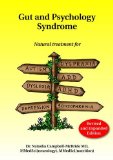






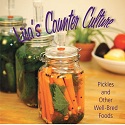
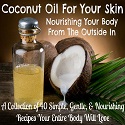
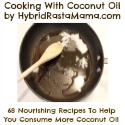



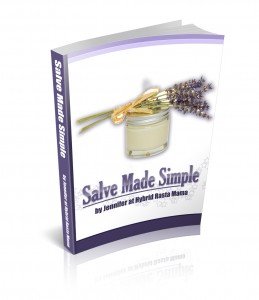

You cannot cure autism. Implying that a diet can cure autism shows a profound lack of understanding of the condition.
Food is the medicine or the poison. This food helps clean up the poison. Your statement, Anonymous, shows a profound lack of understanding of the condition, and the fix. Maybe do some research before making statements like you did. There are thousands of people all over the world who have self helped their Families by this diet.
Dear anonymous,
I do not have an autistic child so you will have to discuss that with the parents who do and have used this diet.
The author of the book has a son who was diagnosed with autism and no longer fits the diagnosis thanks to this approach. There are others who have healed as well with this and other approaches. It isn't difficult to find their stories if you look for them.
Patty
I know multiple families personally who have seen their autistic child cured through the GAPS diet. Anonymous…you might want to watch these before and after videos of a child with autism who went on the GAPS diet. Pretty profound! http://www.cheeseslave.com/autism-recovery-with-the-gaps-diet-one-mothers-story/
or this
http://sahmville.blogspot.com/2011/02/autism-improvement-on-video.html
The emerging information is that Autism is more of a medical disorder than a neurological one. The body of people with Autism is *always* sick and imbalanced with bad gut flora including yeast and bacteria and when it is balanced then they are cured. My own daughter is 5X better than she was when we started GAPS and it was because of science and other testimonials that I gave it a try. I suggest reading up on it from many different resources before saying it *cannot* be cured, because it can and is being cured for many thankfully.
Perhaps it is the word CURED that people get hung up on. If by CURED you are referring to the ability to eat a mainstream highly processed American diet, then no are children have not and will not be CURED. But if you are referring to eating real foods for the rest of their lives so they remain symptom free and are never again subjected to the hell that autism and so many other conditions brings, then YES, GAPS has CURED my son and so many others like him.
Great post Patty! I have a todder whose life was saved by Dr. Natasha and we are forever in debt to her. I often find it hard to explain to people the idea that things could be 'cured' using food, because mainstream America is so used to popping a pill or blaming genetics for everything. I have recently been educating myself on epigenetics, and so glad to see it becoming increasingly accepted among mainstream doctors. Pubmed is featuring many studies showing the connection between autism and intestinal health, but unfortunately it takes 10+ years for mainstream medicine to catch up to new medical literature. I also personally find it frustrating that we could lose our roots in healthy practices (chicken soup anyone?) in such a short period of time. Quite frightening really. In the meantime we can only do our best to educate those who want to hear!
My son was diagnosed with autism, and after 6 months on the GAPS diet, they are re-evaluating him, because he may no longer fit the criteria. Within 10 days on the diet, there was a recordable, notable difference *even in his reflex integration* noted by his OT therapists.
I know a mainstream autism therapist who has had nearly a hundred autistic patients. He told me he's seen huge improvement in the children with a diet change, and complete symptomatic reversal in those who follow a gut-healing diet with a lot of detox. I asked him if he would use the word "cured", and he said, "No! I'm a therapist not a nutritionist! I wouldn't have any work!"
Thanks for your post!
I wonder why Baden didn’t include earaches in the list above. It’s one of the relatively early signs that parents can recognize and identify as a sign that their child is a “GAPS baby” in need of this healing protocol. The sooner the better, I might add, before it goes further and develops into much worse things later in life — which will happen if the underlying problem is not addressed.
I love your blog. I know that I have major gut dysbiosis. I just had a baby 2 months ago and wonder how I can improve his flora. I know that he did not get optimal flora passing through the birth canal. I am nursing, so I started the full GAPS yesterday hoping this will help both of us.
Any advice would be much appreciated. Thanks for your time!
You being on GAPS will indeed help you both. If you put kefir or yogurt on your nipples that will help to shift your own skin flora and help him to get what he needs. There are also probiotics designed for babies that you can give to him. Bio Gia L-Reuteri drops are one of my favorites for infants.
Hi to All,
I found this site connecting my garlic intolerance with sulfur foods and many things I have read here ring true for me. I knew garlic was hard for me to digest but it has gotten worse to the point I just don’t eat it, except that it is in all kinds of food and restaurants use it heavily, so I am really making changes. My reaction is major gut pain in the lower right abdominal area, bloating and fatigue. I found lots of posts where people feel the same way and I am learning I am not alone. In regards to your blog, I have been making broth every week for a year now and I find it has helped tremendously. I figured this out on my own but like the validation here. Also, I am into what I call Bath Culture and base my skin care line around it. Detoxifying the body through hot baths and using essential oils to support the health of my immune system has been key and lead me to make Monsoon Nectar Skin Care. On another site I read coffee was sulfur rich and I haven’t drank it over a month and my gut has been the better for it.
Thanks for your informative blog! MarnaWoo
I had no idea that autism could be controlled by diet – I’m amazed. Thanks for the tremendous article and testimony of the healing of your son. I do not have anyone that I know who is autistic however, it is good to have this information and to share it. I’ll be doing a post on my blog about this.
C Sadler recently posted…Unraveling The Mystery of Autism: Could Diet Be The Answer?
I have a son with autism an looking at him i see this busy active 9 year old that looks like he never eats. Yet he eats all the time!! He weighs only 10 Pounds more than his little 4 year old brother. I feed them the same foods. One has never been put on antibiotics an the other HAD struggled with strep for 3 years… Never gaining weight. I watched him go backwards this last year not knowing about the autism because he’s so high functionibg people just think he’s being naughty or obstinate. I kept saying he was starving an wondering why? Finally so many pieces of this puzzle are coming together. I have changed his diet an only use natural remedies for him. One being melatonin to help him sleep. It works wonderfully but i just read it on the list of illegal foods for him based on the GAP diet. Can u tell me why? It looks like I need to find something else to help him sleep.
Hi Tamera,
We used to use melatonin for my daughters for a few years so I am very familiar with it. The author of the GAPS book says to continue with necessary medication while starting GAPS until they aren’t needed any longer. We did finally stop using melatonin about 2 years ago and got my daughters adrenals tested. Turns out my 9 year old had really low adrenal function. Melatonin pushes it lower so that clearly was not a good answer. That also explained why she did not stay asleep well no matter what we did. Melatonin just helped her get to sleep faster but she woke up really grumpy in the morning and I just thought that she wasn’t a morning person. The hope is that with proper nourishment his body won’t need anything to help him sleep and you can wean him off the melatonin. I would encourage you to focus on nourishing his adrenals with lots of minerals and animal fats. Also make sure he gets plenty of salt in his diet. Of course I mean natural, unrefined, sea salt. The adrenal glands use a lot of sodium.
Hi Patty,
I’ve read a bit about GAPS, SCD, and also the low-FODMAPs diet for intestinal healing. Do you have any experience with the low-FODMAPs diet and can you explain what the difference is between that and GAPs? I’m a little confused by all these different diets that claim to heal the gut!
GAPS and SCD are very similar. SCD is the diet that GAPS uses but GAPS adds more to it. There is also an version of SCD out there that is pretty much identical to GAPS (that for some reason puts a lot of energy into proving how different it is….) Anyhow FODMAPs is a very different approach and some have had to combine it with GAPS. FODMAPs is about taking out foods or rather groups of foods that some people react to. Not everyone who needs gut healing needs to follow FODMAPs principles because different people react to different things. Two family members in my family need to be on a Low Oxalate diet (LOD) and from comparing the lists in the past I know that many foods that are good for a LOD are bad for FODMAPs and vice versa. The advice that I got and that I will give to you is to try GAPS first and then if you need to, after several months, add in FODMAPs or whatever you may think you need to add to find healing. For some the gut is able to heal enough while consuming foods that may cause reactions and for others they will need to be taken out for healing to happen. Simply removing the problem foods however is less likely to bring healing since the gut often needs some extra nutrition and help to really heal.
Thank you, that’s very helpful!
Hi
I’m loving your blog on these topics.
I’m wondering if I can copy your explanation of what the GAPS protocol is into my blog. I would credit your blog and provide a link.
My blog is semi private but I am willing to give you a link to it if you let me know.
Thanks
Hi Gel,
You may use a short excerpt and then link back to my blog for the rest of the post. It is my understanding that if you copy the whole thing it may make Google think that you were the original author and send people to your blog instead of mine and penalize me for posting duplicate content. I’m sure you understand and I’m so glad that you found it helpful enough to want to share it with others.
I have a friend that suffers from complications of diverticulitis. So far he is doing 100 times better after I got him eating Slippery Elm Bark on a regular basis as a nutritional supplement(and to help with digestion issues), and to eat less processed food. I think he is having absorption issues. Eating is becoming less torture for him now, though. I’d like to get him on the GAPS diet, I keep hearing about it. OR at the very least I would like to incorporate more of the real foods from the diet into our daily intake.
What are the best places to learn more/the best resources on GAPS (sans a Google search)?
Read the book. Go to http://www.gaps.me and read there.
Hi Patty,
Do you know anyone in the Little Rock, AR area doing GAPS? Any practitioners? Anywhere to find out? I looked on gapsdiet.com practitioners and did not see any.
Thank you!
No sorry.